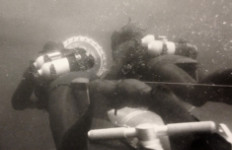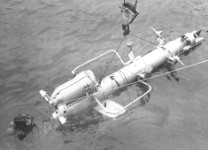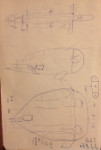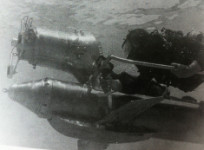Share:  _
_
 _
_

Rare piece of SBS and Royal Navy diving history now on display
 The Clearance Diver Vehicle-1 (CDV-1), also known as the SDV-1 (Swimmer Delivery Vehicle), was a in many respects ahead of its time. But little is known about this advanced contraption from the height of the Cold War. Now one of the three examples built in the late 1960s is now preserved on display at The Diving Museum, Gosport, England.
The Clearance Diver Vehicle-1 (CDV-1), also known as the SDV-1 (Swimmer Delivery Vehicle), was a in many respects ahead of its time. But little is known about this advanced contraption from the height of the Cold War. Now one of the three examples built in the late 1960s is now preserved on display at The Diving Museum, Gosport, England.
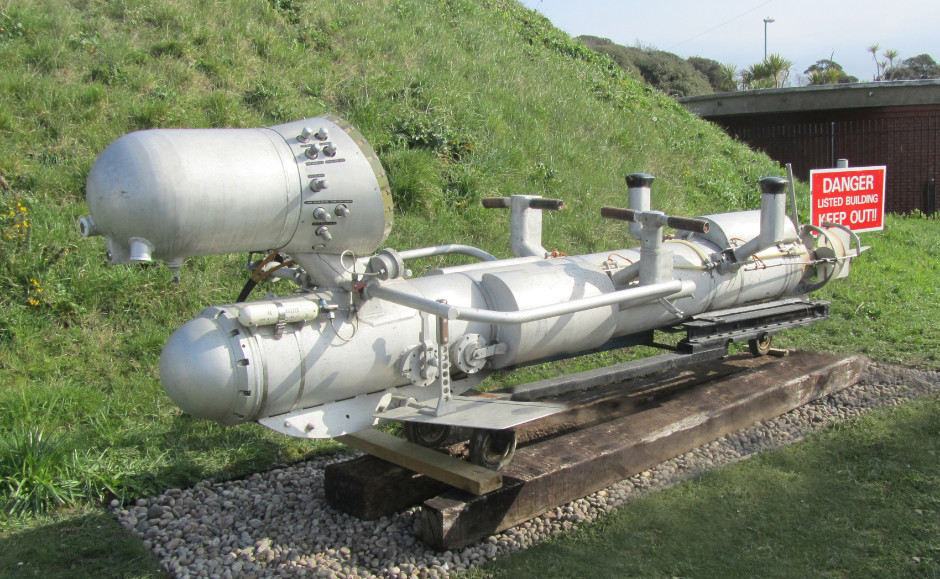
Photo via Dr. John Bevan, HDS
The Diving Museum is the closest thing to a national diving museum and is well situated in a historic Victorian fort overlooking the English Channel. A few miles down the Road is the Royal Navy Submarine Museum at Gosport (which has a fascinating and rare collection!), and other maritime attractions including the Mary Rose and HMS Victory.
Development of this vehicle was largely in the hands of Dick Tuson who worked at the Admiralty Material Laboratory. The original requirement was raised by Cdr. PJ Messervy of the Admiralty Underwater Weapons Establishment (AUWE) who wanted a vehicle to transport Clearance Divers during routine underwater work on test ranges. There does not seem to have been any suggestion to use it for mine clearance, presumably because the concept of using diver vehicles for that had already been found to be dangerous and inefficient. But development continued as a Special Forces transport for the Royal Marines’ Special Boat Squadron (now UKSF Special Boat Service).
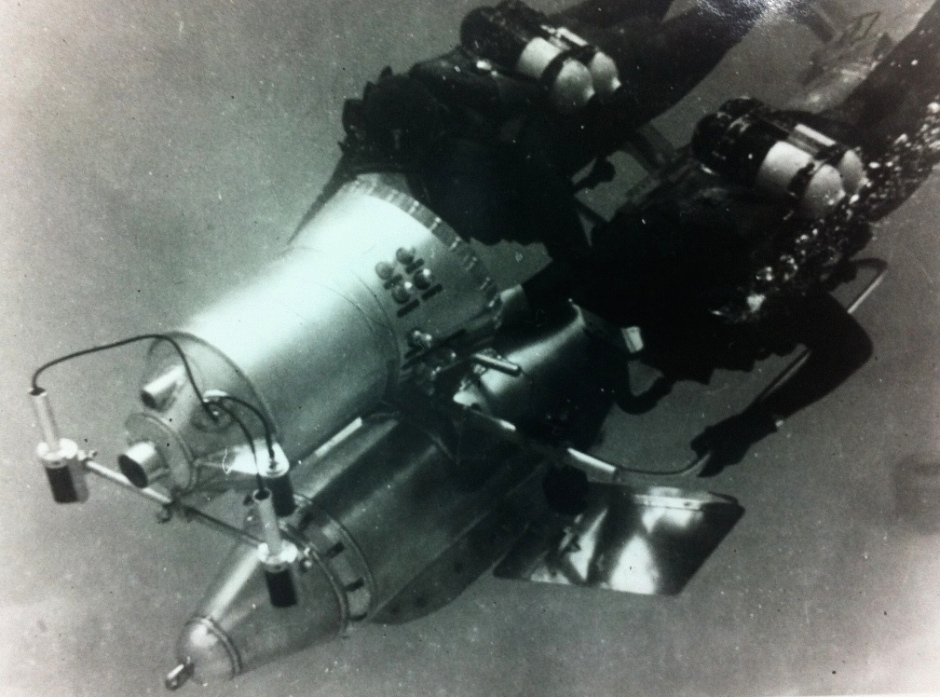
Despite its significance this vehicle little-known and poorly understood. One point of confusion is that it went by several names. Initially it was termed CDV-1 (Clearance Diver Vehicle) for Royal Navy divers, and the SDV-1 (Swimmer Delivery Vehicle) by the SBS. ‘SDV’ is now a reasonably well recognized term but in the 1960s only a few people within the US Navy UDT/SEALs and British SBS would have been familiar with it. More casually the vehicle was known as the “AML” after the Admiralty Materials Laboratory. It also seems likely that some people may have considered it another Pegasus because of its strong likeness to the Rebikoff design.
The SBS’ focus was strictly on sabotage and beach reconnaissance for which a two-man craft was adequate. Although they had direct access to the highly secretive USN SDV projects, there was no suggestion that they wanted an SDV large enough to carry a team for over-the-beach missions. The SDV Mk.VII, then in development in the United States, was considered too large and too heavy for British diesel submarines. The SDV-1 was tested aboard Royal Navy Oberon Class diesel-electric submarines in the frigid waters off Norway.
The ultimate book of Special Forces subs Covert Shores 2nd Edition is the ONLY world history of naval Special Forces, their missions and their specialist vehicles. SEALs, SBS, COMSUBIN, Sh-13, Spetsnaz, Kampfschwimmers, Commando Hubert, 4RR and many more.
Check it out on Amazon
At 12.5ft (3.81m) in length and 13.75” (0.35m) in diameter the SDV-1 was slightly larger than the French Rebikoff Pegasus which it was largely based on. It was still small by SDV standards with the two-man crew laying prone either side of a torpedo-like hull with shrouded propeller and conventional control surfaces at the rear. The British much preferred a side-by-side arrangement over a tandem layout because it improved crew communication and allowed one man to pilot while the other navigated and monitored the batteries. The driver lay on the port (left) side and the navigator on the starboard (right), slightly further aft. They operated as a buddy pair, each watching out for the other’s safety even though they could not be connected by a buddy line in case it got snagged on something.
The instrument pod was deliberately over-sized to create an air pocket which ensured that the center of buoyancy was significantly above the center of gravity, thus acting as a self-righting mechanism. This made it so stable that it could not be banked like the Rebikoff and had a large 20ft (6m) turning radius. It could however be driven vertically down but the controls made it self-righting if the hands were released, allowing it to be driven hands-free for several seconds at a time.
1. 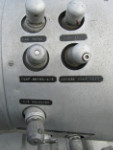 2.
2. 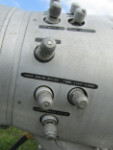 3.
3. 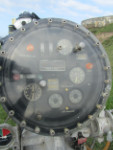 4.
4. 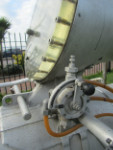 5.
5. 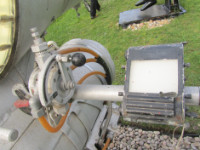
- route/depth log switches for bottom search / hydrographic survey recording. 2. Homing sonar switch. 3. Instrument panel. 4. The thickness of the perspex on the instrument panel. 5. Secondary pannel, use TBC. Photos via Dr. John Bevan, HDS
The lit (!) instrument panel behind the 1.5 inch Plexiglas window were superior to most contemporary designs with multiple compass displays, speed and journey logs and battery meters. It had a 24hr digital clock which displayed minutes and, unnaturally, tenths of minutes. But the big deal was the echosounder, a small active sonar system which could be pointed either downwards for accurate seabed readings or forward for obstacle avoidance.
Get The essential guide to World Submarines
This Covert Shores Recognition Guide Covers over 80 classes of submarines including all types currently in service with World Navies.Check it out on Amazon
Even more advanced in both concept and technology were the Vacuum Reflex homing devices incorporated into the craft to help it rendezvous with the host submarine after the mission. Finding the host submarine at night and in poor visibility had always been a serious problem for SDV operations and many low-technology solutions had been used, frequently involving surfacing and flashing lights or flares. The system, which consisted of two receivers mounted on a frame across the front of the craft allowed the SDV to home in on a 20khz beacon carried by the submarine from about 700m (0.4 miles). The pilot used a display of flashing lights to center on the beam and typically managed a straight approach for the last 200m. This was head and shoulders above most SDV operations at the time and was considered several years ahead of anything available commercially or from overseas.
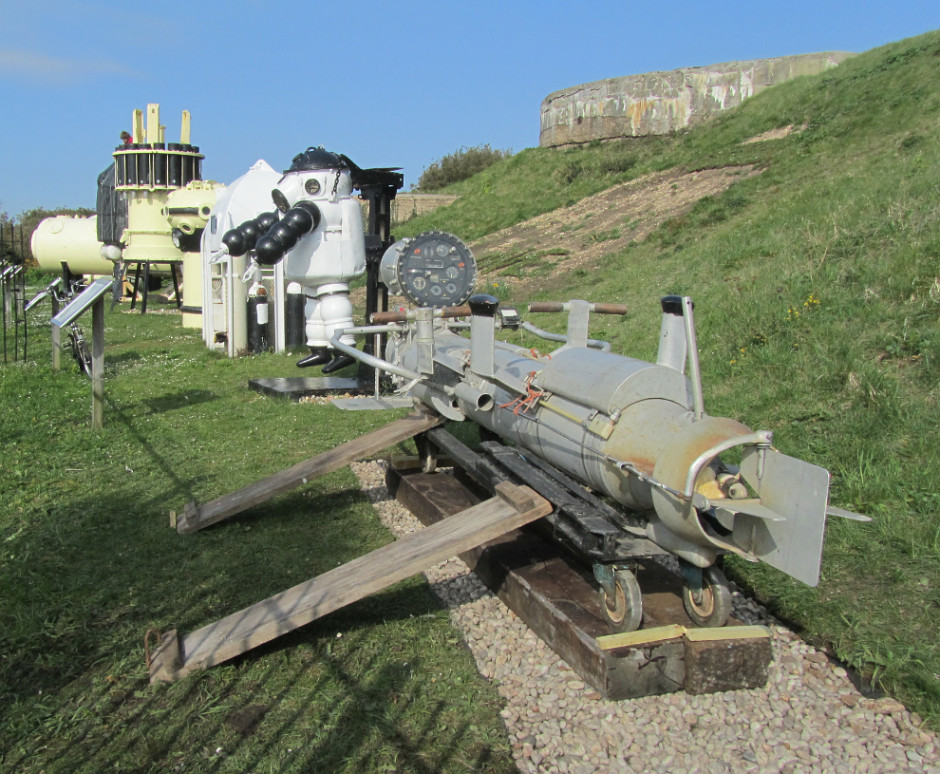
Photo via Dr. John Bevan, HDS
The Silver-Zinc battery drove a 4.4hp motor which allowed 4hrs endurance and 3kt. Any faster was unworkable in a design where the divers were not protected against the oncoming water. When the three test vehicles were worn out, the SBS switched to enclosed SDV designs – for another article! And Air-Independant-Propulsion (AIP) SDVs - yet another article!!
Related articles (Full index of popular Covert Shores articles)

 SBS Archimedes SDV
SBS Archimedes SDV

 British SDV developmemts in 1960s (Dick Tuson)
British SDV developmemts in 1960s (Dick Tuson)
 Sleeping Beauty (Motorised Submersible Canoe) of WW2
Sleeping Beauty (Motorised Submersible Canoe) of WW2

 Mignatta first human torpedo
Mignatta first human torpedo

 Stidd Diver Propulsion Device (DPD)
Stidd Diver Propulsion Device (DPD)


 Dry Combat Submersible (DCS)
Dry Combat Submersible (DCS)

 SDV Mk.9 SEAL Delivery Vehicle. w/Cutaway
SDV Mk.9 SEAL Delivery Vehicle. w/Cutaway

 DGSE's SDVs
DGSE's SDVs

 Cos.Mo.S CE2F chariot
Cos.Mo.S CE2F chariot

 SWUV (/ PSM3G) advanced SDV
SWUV (/ PSM3G) advanced SDV

 DSI Diver Delivery Craft (DDC)
DSI Diver Delivery Craft (DDC)

 Naval Spetsnaz in Hybrid Warfare (Russian SDVs and DPVs)
Naval Spetsnaz in Hybrid Warfare (Russian SDVs and DPVs)

 SubSEAL advanced SDV
SubSEAL advanced SDV

 SubCat SDV
SubCat SDV


 Marex Type-A (A2, A4, A5, Comex Total-Sub-01) SDVs
Marex Type-A (A2, A4, A5, Comex Total-Sub-01) SDVs

 Polish Blotniak SDV
Polish Blotniak SDV


 EMT FWS-1 to -5 Barracuda SDVs
EMT FWS-1 to -5 Barracuda SDVs

